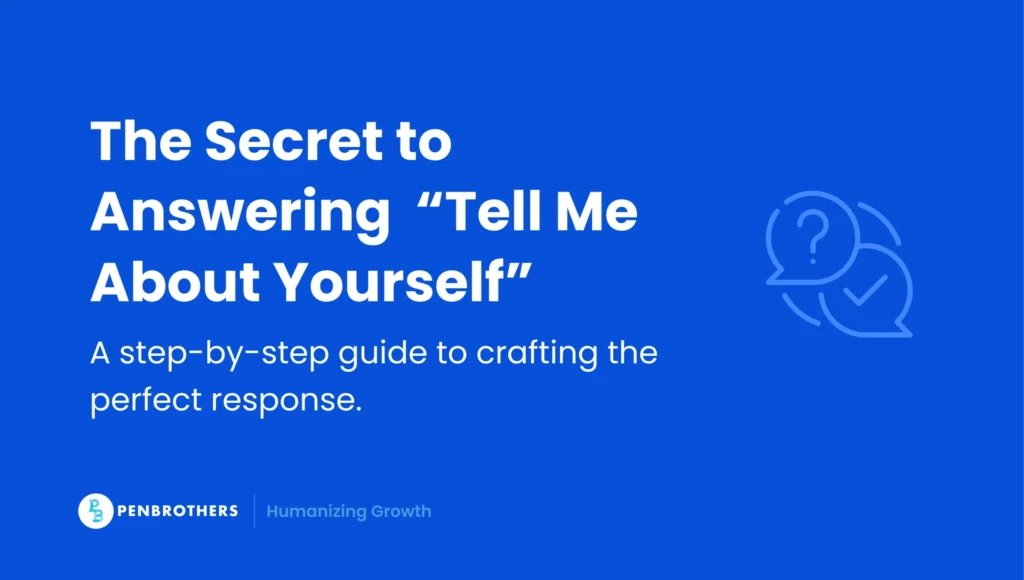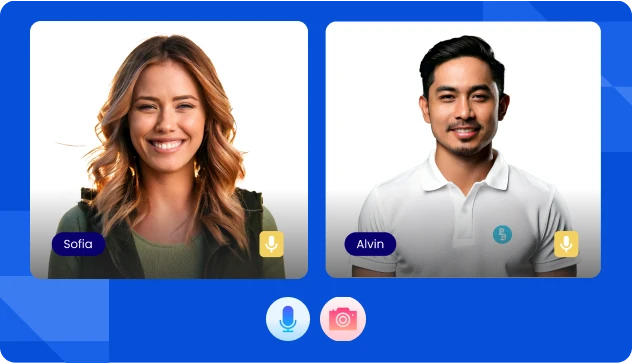If you think “Tell me about yourself” is just small talk, think again. This isn’t a casual icebreaker. It’s a test. Most candidates fumble here. Some ramble through their life stories, others recite their resumes verbatim, and a few freeze up entirely. The right answer, however, can set the tone for a winning interview. It’s your chance to shape the narrative, control first impressions, and immediately position yourself as the candidate to beat.
This guide goes beyond the usual advice. We’ll break down why interviewers ask this question, provide adaptable answer frameworks for different career situations, and deliver industry-specific examples that make your response stand out. By the end, you’ll know exactly how to craft a compelling answer that gets interviewers leaning in, not tuning out.
Key Takeaways
- A Strategic Pitch, Not Just an Icebreaker: The question “Tell me about yourself” is a critical test of your communication, confidence, and relevance. Your answer should be a concise, strategic pitch designed to make a strong first impression and control the narrative of the interview.
- Structure Your Answer with a Framework: A powerful answer is not improvised; it’s structured. Use a framework that fits your career situation, such as the Present-Past-Future model for most professionals, the Challenge-Solution-Outcome model for leadership roles, or a model focused on transferable skills for career changers.
- Keep it Brief, Relevant, and Under 90 Seconds: Your response should be a focused summary, not your life story. Aim to keep your answer under 90 seconds, highlighting only the most relevant skills and achievements that align directly with the specific job you are interviewing for.
- Connect Your Past to the Future: The strongest answers link past accomplishments to measurable outcomes (e.g., “increased sales by 30%”) and always conclude by looking forward. Clearly explain why you are excited about this specific opportunity and the value you are eager to bring to the team.
Why Employers Ask This Question
Interviewers use this question to evaluate:
- Confidence & Communication: Can you present yourself clearly and professionally?
- Relevance: Do your skills and experience align with the role?
- Composure: How well do you handle an open-ended question?
It also serves as an icebreaker, allowing hiring managers to gauge your personality and enthusiasm. A strong answer can immediately set a positive tone for the rest of the interview.
Variations of the Question
While the phrasing may differ, the goal remains the same. You might hear:
- “Can you walk me through your career journey in a way that relates to this role?”
- “What’s one career highlight that defines your professional path?”
- “If I were to introduce you to the team, what would you want them to know about you?”
Regardless of the wording, your response should remain structured, relevant, and engaging.
Structuring Your Answer: Choosing the Right Framework
Choose the best approach based on your career stage and goals:
1. Growth-Oriented Approach (Present-Past-Future)
Best for professionals aiming for career progression.
- Present: Your current role and key responsibilities.
- Past: Previous experiences that shaped your expertise.
- Future: What excites you about this opportunity?
Example:
“I direct data-driven digital marketing efforts at [Company], achieving a 40% increase in engagement. Before that, I worked in content marketing, focusing on brand storytelling. Now, I’m looking for a role where I can merge data-driven insights with creative storytelling to drive impactful campaigns.”
2. Leadership Impact Approach (Challenge-Solution-Outcome)
Ideal for executives and senior professionals.
- Challenge: A complex problem you’ve tackled.
- Solution: The actions you took.
- Outcome: The measurable impact.
Example:
“As a sales director, I faced declining revenue due to outdated client acquisition strategies. I led a shift to data-driven targeting, which boosted sales by 30% in a year. I’m eager to bring this results-oriented mindset to your team.”
3. Career Transition Model (Skills-Industry Connection-Value Proposition)
For industry shifters or job seekers changing roles.
- Skills – Your transferable expertise.
- Industry Connection – Why this shift makes sense.
- Value Proposition – How your background benefits the new role.
Example:
“After a decade in journalism, I transitioned to UX writing to apply my storytelling skills to digital experiences. My background in audience engagement and research helps me craft intuitive user journeys. I’m excited to bring this perspective to your UX team.”
Sample Answers by Industry
Here are examples that fit in-demand industries to guide you better in figuring out the best way to respond to this common interview question:
Finance
“I’ve spent the last eight years in investment analysis, identifying high-growth opportunities and optimizing portfolio performance. At [Company], I led a restructuring initiative that increased returns by 20%. I’m excited to apply my analytical skills and financial expertise to drive strategic investments at your firm.”
Sales
“As a sales manager at [Company], I exceeded my quarterly targets by 25% through consultative selling and strategic account management. I thrive on building strong client relationships and delivering solutions that drive revenue. Now, I’m looking for a leadership role where I can mentor teams and scale sales growth.”
Marketing
“With a background in performance marketing, I’ve managed campaigns that doubled lead conversions while optimizing ad spend. My expertise lies in blending data analytics with compelling storytelling to enhance brand engagement. I’m excited to bring this results-driven approach to your marketing team.”
Corporate Leadership
“My career in operations management has been defined by efficiency and team empowerment. At [Company], I streamlined supply chain processes, cutting costs by 25%. I’m passionate about optimizing workflows to drive growth.”
Technical Roles
“Building robust and scalable backend architectures is my primary focus as a software engineer. I built an API that handled 2M+ requests daily with zero downtime. Now, I’m looking for an opportunity to develop high-performance infrastructure for a fast-growing tech firm.”
Creative Roles
“As a content strategist, I develop compelling brand stories that connect with audiences. A campaign I led for [Company] increased engagement by 70%. I thrive on storytelling that drives action.”
Customer Service
“With a decade in customer service, I’ve trained teams that improved customer satisfaction scores by 40%. I’m excited to bring this people-first approach to your organization.”
‘Tell Me About Yourself’ Answer Builder
Want a quick formula to craft your response? Download our Fill-in-the-Blanks Answer Builder, complete with:
- A structured template to personalize your answer.
- A checklist to ensure clarity and impact.
- Additional industry-specific examples for customization.
Template: Answer Builder – Tell Me About Yourself
Final Tips & Next Steps
1. Rambling without focus.
Do this instead: Keep it structured and under 90 seconds.
2. Sharing irrelevant personal details.
Do this instead: Focus on skills, experience, and career goals.
3. Reciting your resume word-for-word.
Do this instead: Highlight achievements that match the role.
4. Being too modest—this is your chance to sell yourself!
Do this instead: Show confidence in your contributions and impact.
Your Next Move
If you’re serious about landing your next job, start refining your answer today. Then, put it to the test. Apply for roles that align with your strengths and ambitions like Jitka. Don’t let a poorly crafted introduction be the reason you miss out on your dream opportunity.
Frequently Asked Questions
They use this open-ended question to assess several key traits at once: your confidence, your communication skills, your ability to be concise and relevant, and your professional composure. It sets the tone for the rest of the interview and gives them a first impression of your personality and fit for the role.
A highly effective and widely used structure is the Present-Past-Future model:
Present: Briefly state your current role and a key responsibility or achievement.
Past: Mention one or two relevant past experiences that have prepared you for this moment.
Future: Connect your background to this specific opportunity and explain why you are excited about it.
Your answer should be a concise and compelling summary, ideally lasting no more than 90 seconds. The goal is to engage the interviewer and provide a strong overview, not to recite your entire resume.
The most common mistakes are rambling without a clear structure, simply reciting your resume word-for-word, sharing irrelevant personal details, and being too modest. This is your primary opportunity to confidently present your value proposition.
For a career transition, focus on a Skills-Industry Connection-Value Proposition model. Start by highlighting your key transferable skills, explain why this new industry is a logical next step for you, and clearly state the unique value and perspective your different background brings to the new role.






